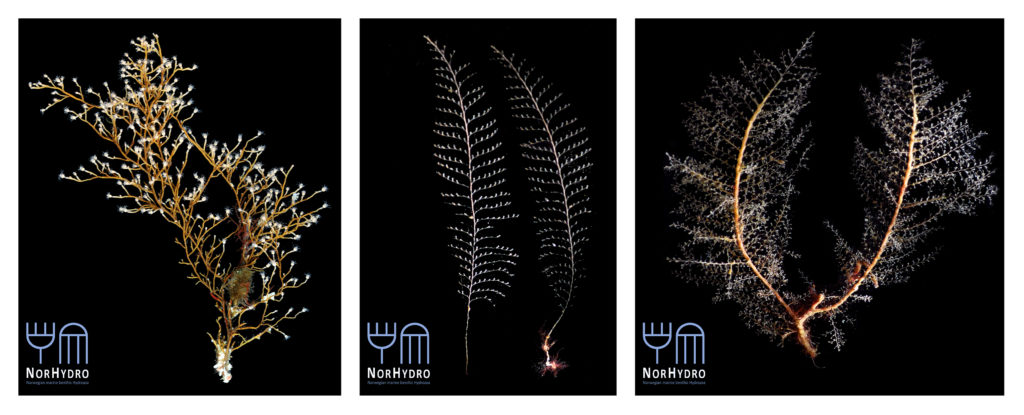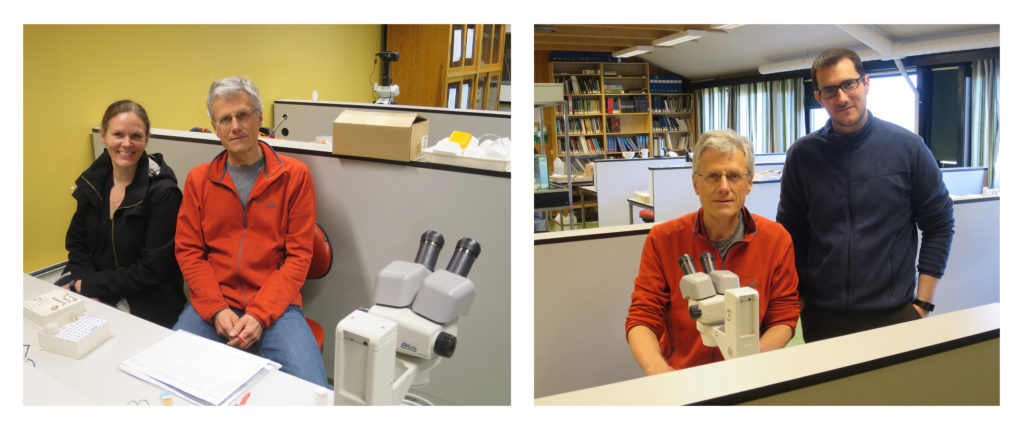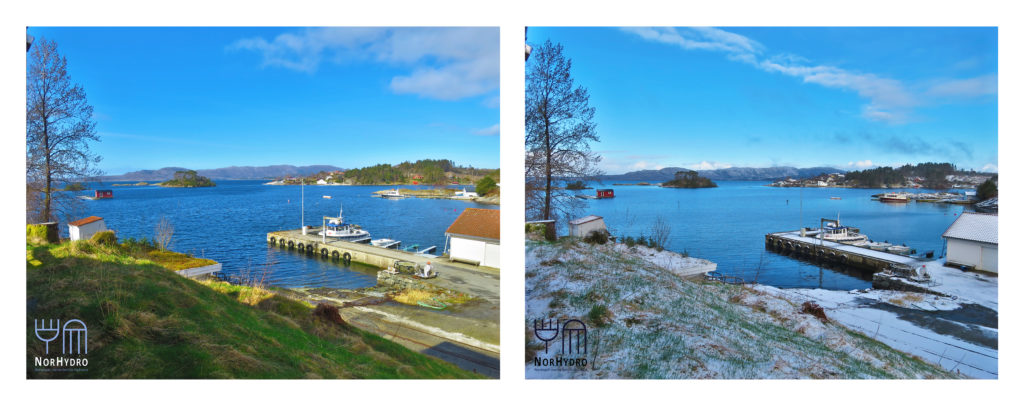Spring means warmer temperatures, increasing daylight, flowers blooming everywhere… and a lot of outdoor and outreach activities for our projects at the Invertebrate Collections of the museum! In particular, project NorHydro started last month with a kick-off workshop (read more about it here) and we have not stopped collecting specimens, attending conferences, teaching courses and joining sampling trips since then. But why is it that spring is such an important time for hydrozoans and NorHydro?
Well, for starters, spring is the reproductive season for many species of hydrozoans in Norwegian waters. Most Norwegian hydrozoans are seasonal animals and for many of them the increasing temperatures and daylight of March and April trigger a shift in the life cycle towards the production of reproductive stages.

Tiny hydromedusae were already being produced in many of the hydroids we collected, like these colonies of Sarsia tubulosa (left) and Obelia dichotoma (right). Pictures: Luis Martell

Colonies of Eudendrium vaginatum (left), Kirchenpaueria pinnata (middle), and Halecium halecinum (right). Photos: Luis Martell and Joan J. Soto Àngel
The reproductive stages are often necessary to correctly identify a hydroid colony to species level, so we took advantage of the season to collect the very first samples of the project during the kick-off workshop. More than 50 samples of hydrozoans were collected thanks to the efforts of all the participants, and special thanks are due to NorHydro’s team of hydrozoan experts for identifying the specimens and making for a great start of the project.

The hydrozoan team: Aino (left), Peter (in both pictures), and Joan (right), hanging around in the lab of the Marine Biological Station during the kick-off workshop. Pictures: Luis Martell
Peter Schuchert from the Natural History Museum of Geneva was a very special participant in this meeting, where he kindly shared his extensive expertise with us. Peter’s knowledge of hydrozoans is impressive, and it was a real pleasure to learn from him on everything from collecting methods to preservation techniques and species identities. Completing our team of experts were our very own Aino Hosia from the University Museum, who stopped by to share some of her experiences on hydrozoan diversity in the region, and Joan J. Soto Àngel from the Sars International Centre for Marine Molecular Biology, who collected many specimens and participated in several interesting discussions about the expected outcomes and potential subprojects of NorHydro.

Our samples were full of hydroids, most of which were documented and preserved for future DNA work. Pictures: Luis Martell and Joan J. Soto Àngel
Of course one of the great advantages for NorHydro during the workshop was the possibility to learn from the activities and results of our sister projects Sea Slugs of Southern Norway and Hardbunnfauna, and to share experiences with them and with the members of the university’s student dive club (SUB-BSI). With such amazing partners and professional collaborators, it was impossible for the kick-off workshop not to be a big success, so thank you all for giving NorHydro the best possible start!

We had all types of weather during the workshop, going from almost-summer to snowy-winter in the same day! Pictures: Luis Martell
Keep up with NorHydro here on the blog, as well as in the Facebook page of Hydrozoan Science and in Twitter with the hashtag #NorHydro.
– Luis
